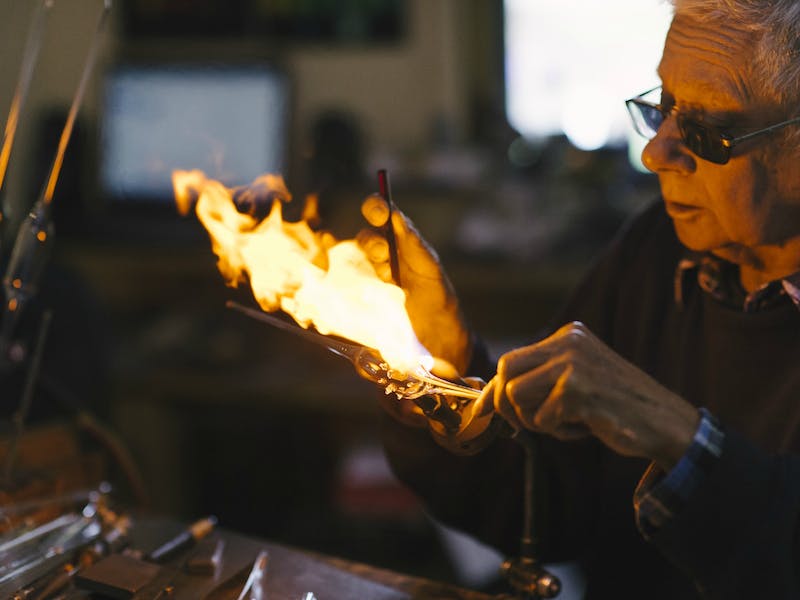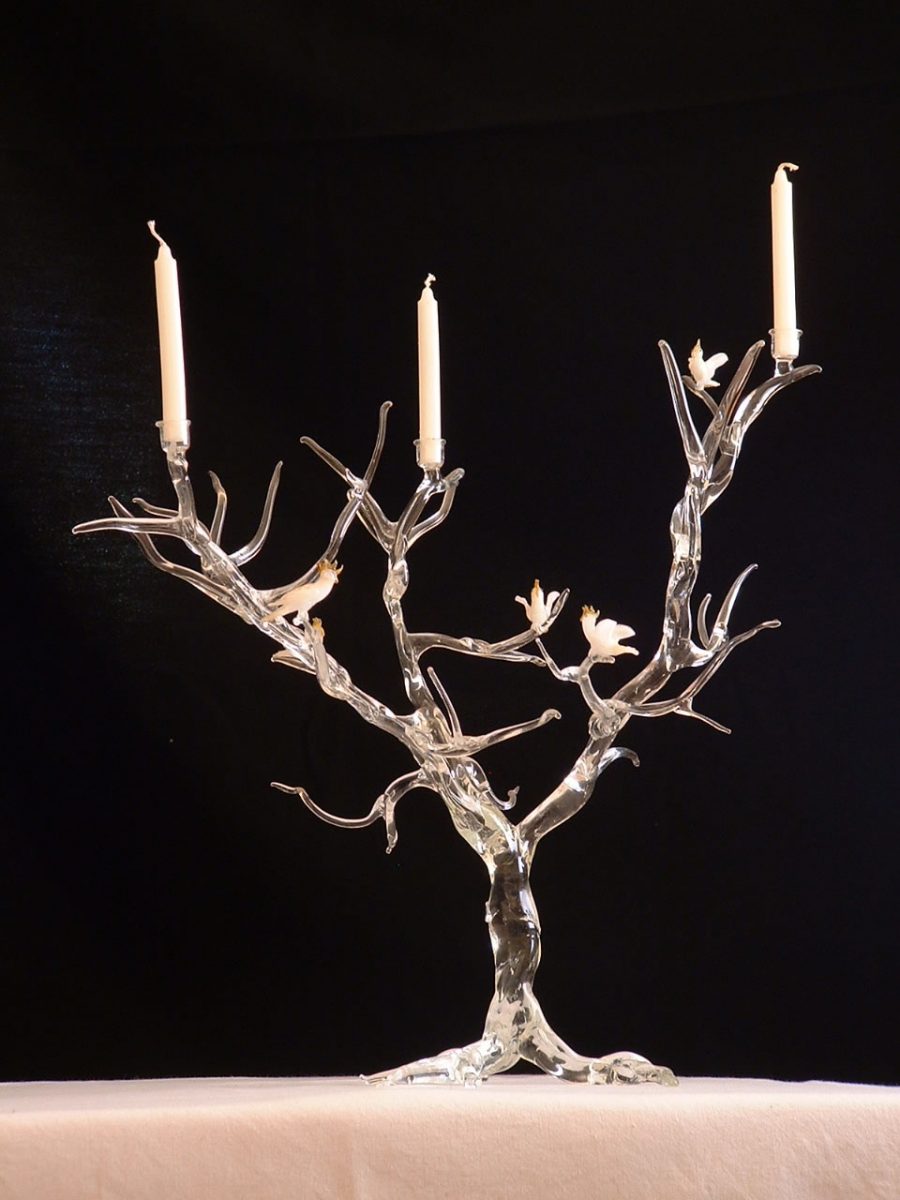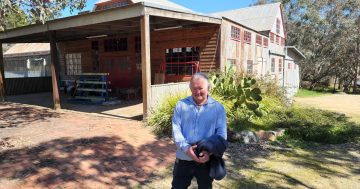
Glass artist Peter Minson at work in his Binalong studio. He features in a new film about artists and their work. Photo: Supplied.
It’s no surprise Peter Minson has cracked it as one of our leading glass artists.
He is third generation in the remarkable genre that pits artist against the ferocity and unpredictability of fire to create something as fragile as, well, glass.
Today, at 81, he couldn’t be more creative. He’s the latest Winston Churchill Trust Fellowship recipient to appear in the Makers and Creators short films, which look at the artist behind the work – and he’s also experimenting with a new technique of his art that made his grandfather famous when he was barely a year old.
Describing himself as “almost a local” after living and working in Binalong, about 90 km from Canberra, for the past 40 years, Peter is featured in the latest Trust film which is designed to provide a unique insight into how an artist works, what inspires them and explains, why he does what does.

One of Peter Minson’s works, a glass candelabra in the shape of a branch. Photo: Supplied.
“When they did the filming it was a spontaneous sort of thing,” the artist said. “I didn’t really know what they wanted to capture, it was unscripted – but it seemed to turn out all right.”
Peter received his fellowship back in 1995. It took him to the United States and Europe, visiting such meccas for glass artists as the Corning Glass Museum, Baccarat factory in France and Venice’s historic glass museum.
Speaking at the time about being among some of the world’s best glass art, he said: “It is obvious Australian glass artists are equal to those overseas and in some ways are producing more innovative and creative work than those overseas. We do not lack originality in this country and it is only the distance we are separated by that limits a greater impact on the overseas market. The main lesson learnt [is that] we need to promote ourselves better overseas.”
Such a trip was a perfect learning experience for the artist who left school at 16 to work with his father Albert (known as Jim), in the family business making scientific equipment and becoming fascinated, early on, by glass and lamp work.
But the family connection to glass art went back even further – Peter’s grandfather, also Jim, made the first neon signs in Australia and was involved in the design and manufacture of the first thermos flask and radio valves. They also made light globes for the English company, Osram.
For Peter, winning the Churchill Fellowship was life changing. He wrote at the time: “I am continually seduced by the properties of glass. Bright shining and hard when cold; completely transformed when hot and molten. To be able to dream of shapes and colours and see them appear as if by magic under intense heat and in my hands would have to be the ultimate in job satisfaction.”
After deciding to venture off on his own, the young artist started working on pieces he wanted to make. His love of nature drew him into creating glass flowers, something he still does today, as well as jewellery, wine glasses, vases, decorative pieces and even teapots.
“A while back, they asked me to do an exhibition at the Glass Gallery in Wagga. I wasn’t sure what I wanted to exhibit so I went back through my work – I’d packed some of the older pieces away – and we decided to do a retrospective.

Peter Minson is well known for his glass flowers which he creates to look as realistic as possible. Photo: Supplied.
“It was amazing to see how I’d changed the way I worked over the years. The exhibition ended up running for about four months and the most common thing people would say was, ‘Did one person make all these different pieces?’.”
Peter believes keeping his work fresh is the key to longevity as an artist, for both creator and the audience. Although he never knew his grandfather – but recalls vividly seeing lots of neon lights scattered around his childhood home – he believes he was “an exceptionally clever man” to have come up with making this country’s first neon signs.
“He had a tough life living through the Depression,” Peter said.
“All the shops were going bust during that time so no one wanted neon signs. He ended up making eyedroppers and would go door-to-door to try to sell them to chemist shops.
“The family history of working with neon got me thinking,” Peter said, “so I started playing around with it. The lighting side of it I could do, it was just the gases and how to wire it all up that I needed to work on.
“I’ve already made a house number and a crown,” he laughed, “we’ll see where it goes.”
More information about the Churchill Trust Fellowhip is available on the website.















